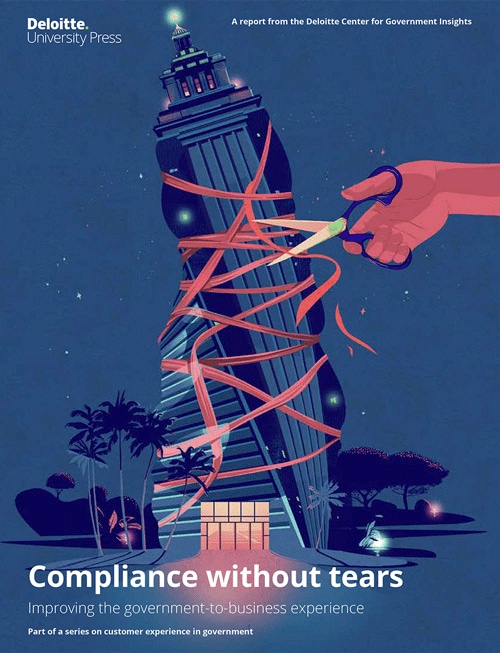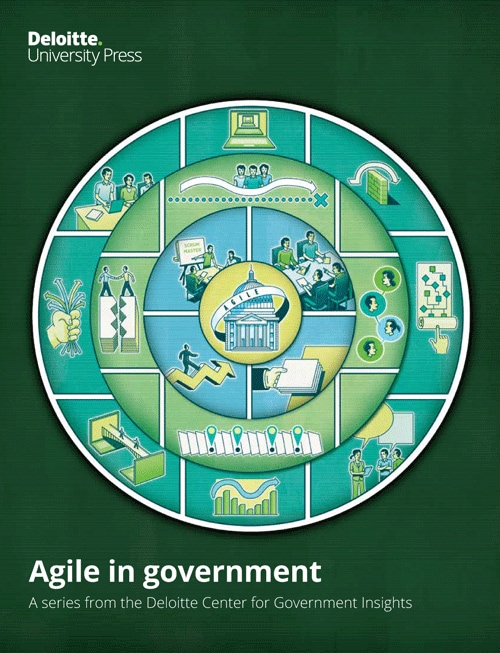Ten bold plays: Help drive action with these ambitious goals has been saved

Ten bold plays: Help drive action with these ambitious goals The State Policy Road Map: Solutions for the Journey Ahead
07 February 2018
In some cases, a strategic initiative driven from the corner office can jump-start state innovation. Here are some bold ideas that could drive positive change in state government.
1. Create a single view of the customer
Most state governments have multiple views of a single customer, unable to link one to the other. Imagine the possibilities if every department in a state government used the same identifier to build a coordinated customer experience. Goal: Boost efficiency and improve the customer experience of citizens and businesses by creating a foundation of a unique customer identifier.
2. Go all in on digital, AI, and cognitive
Learn more
View the full collection
Subscribe to receive Public Sector content
View the table of contents and create a custom PDF, or download the full collection
Sign up for the webcast
Many states’ IT infrastructure is outdated, which means that they are spending to operate and maintain stand-alone, legacy systems. By investing in digital platforms and transformative technologies, states could create a better citizen experience for less. Goal: Leverage cutting-edge technologies to perform repetitive tasks, freeing state employees to focus on more complex service delivery.
 Read more about how states can make compliance easier in Compliance without tears. |
3. Make business compliance easier
In some cases, the biggest cost of regulatory compliance for companies lies in figuring out what they need to do and dealing with manual state processes. Complying with multiple rules around licensing, permitting, and assessments, such as those around unemployment insurance and workers’ compensation, often creates hidden costs for business. Goal: Make it simpler for regulated businesses to follow the rules by considering digital compliance and other tools.
4. Revamp IT procurement
 Read more about how states can adopt an Agile approach to IT procurement in Deloitte’s Agile in Government series. |
The traditional way states procure IT can be cumbersome and too slow to keep pace with rapidly changing technologies. Newer approaches, such as the Agile approach to software procurement, cloud, and software as a service (SaaS), may offer chances to improve in this important area. Goal: Practice more effective IT procurement.
5. Modernize state workforce rules and embrace the future of work
Outdated job classifications and descriptions, the challenge of appropriately rewarding top performers, and other practices can limit the effectiveness of any workforce. Upgrading work spaces, instituting work-from-anywhere protocols, and other innovative approaches can help the state attract and retain the best employees. Goal: Improve the state workforce through updated workforce rules.
6. Declare a war on fraud
 Read more about fighting fraud, waste, and abuse in Shutting down fraud, waste, and abuse. |
From the SNAP program to Medicaid, state-run benefits programs too often send cash to fraudsters rather than to intended recipients. As states look to tighten their belts and increase credibility with potentially skeptical taxpayers and voters, analytics-based anti-fraud initiatives should gather steam. Goal: Ensure that state programs benefit intended recipients.
7. Build a classroom-to-workforce pipeline
Skilled workers are in high demand, but our education pipeline doesn’t always deliver the skill sets that some businesses need. Successful education won’t always culminate in a PhD. Consider programs that may better align and integrate education and business needs, establishing lifelong learning opportunities and easing mid-career transitions for workers displaced by technology shifts. Goal: Grow a work-ready workforce.
8. Embrace “nudge thinking”
States expend a lot of energy trying to get citizens to do things—such as paying their taxes, making their child support payments, and encouraging students to stay in school. For the Medicaid population, states would likely love to get individuals to exercise, take their meds, and keep their doctor’s appointments. Goal: Use behavioral economics principles to boost compliance rates, improve program impact, and lower costs.
9. Conduct a stem-to-stern efficiency review
Consider launching a statewide effort with the goal of identifying sources of cost efficiencies, such as potentially redundant agencies, areas where technology could reduce costs, and unnecessary boards and commissions. Goal: Make more efficient use of scarce tax dollars.
10. Build an integrated mobility ecosystem
Commit state resources to promoting a more integrated transportation ecosystem that allows for sharing of critical data and platforms to facilitate multiple modes of transport. Making the future of mobility a priority could improve both economic growth and enhance the quality of life. Goal: Create platforms to support an integrated mobility ecosystem.





